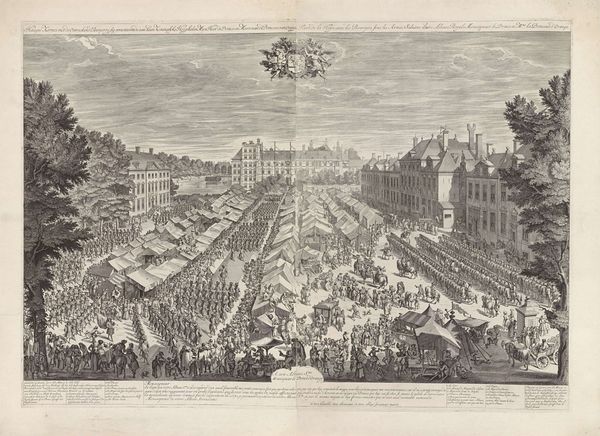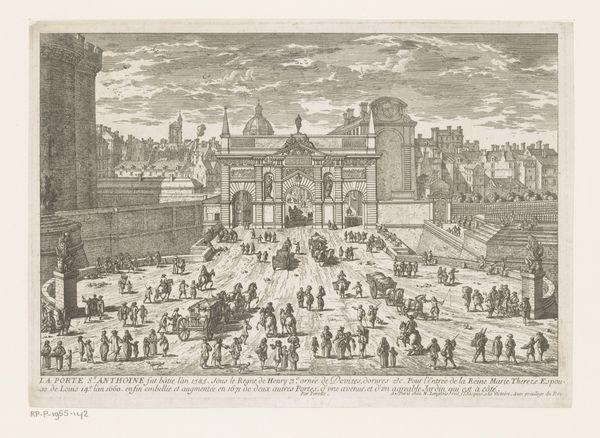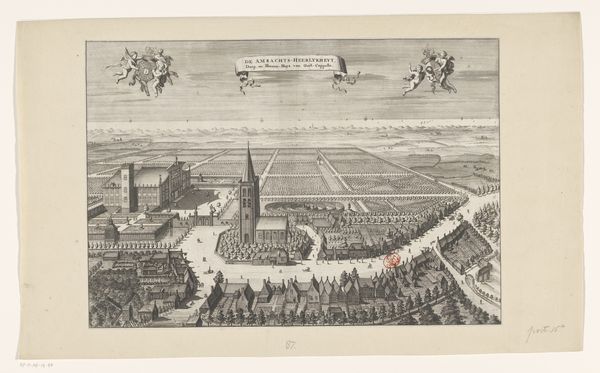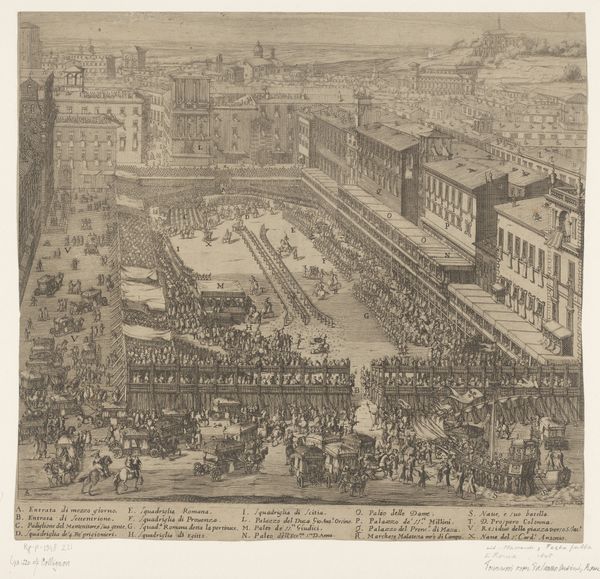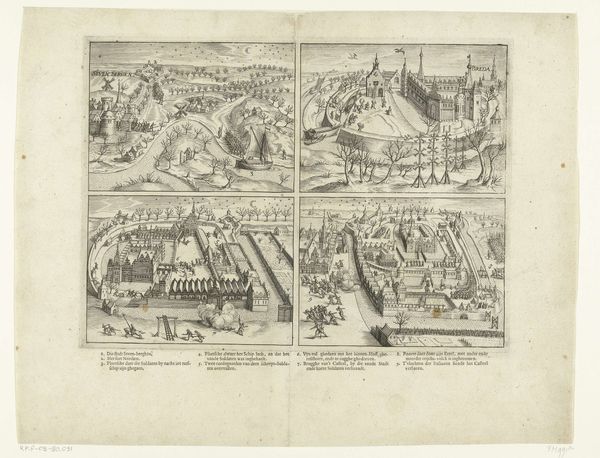
print, engraving
#
baroque
# print
#
cityscape
#
genre-painting
#
engraving
Dimensions: height 653 mm, width 929 mm
Copyright: Rijks Museum: Open Domain
This print, made in 1686 by Daniël Marot, captures the bustling scene of The Hague Fair, featuring the Prince and Princess of Orange. Dominating the upper corners of the composition, we observe cherubic figures bearing wreaths. These figures, symbols of divine favor and celebration, infuse the scene with an air of joyous approval and lend legitimacy to the Prince and Princess. The cherub, a motif carried down from antiquity and Christian art, often appears in triumphal arches and royal portraits to sanctify power. Consider, for instance, how similar figures adorn Roman imperial monuments, framing emperors as divinely appointed rulers. Yet, here, they also evoke something more intimate—a sense of communal blessing over the revelry of the fair. This recurring symbol tells us about the deep-seated human need to legitimize authority and celebrate collective experiences. The wreaths are not merely decorative but act as vessels of memory, echoing through centuries, reminding us of the cyclical nature of power, festivity, and the perpetual human quest for symbolic meaning.
Comments
No comments
Be the first to comment and join the conversation on the ultimate creative platform.
